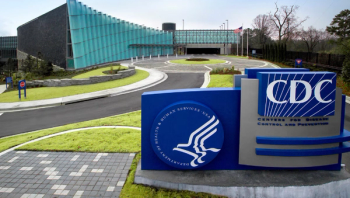
Health care costs projected to rise by 9% in 2026, survey says: 8 takeaways
Large employers are spending more, particularly on prescription drugs, according to the Business Group on Health. Companies are spending more on cancer care and GLP-1 drugs.
Businesses are spending more on health care for their employees, and they expect prices to continue to rise in 2026.
They are also increasingly motivated to get a handle on controlling those rising costs, according to a new survey of large employers by the Business Group on Health released Tuesday.
The group noted that costs have exceeded their projection over the past two years. The organization surveyed 121 employers covering 7.4 million workers in America and 11.6 million employees globally.
Here are key takeaways.
Projected 2026 increase
Employers are projecting a 9% increase in health care costs for 2026, the survey found. That increase is expected to be adjusted to a 7.6% bump after businesses implement plan changes.
During a webinar discussing the survey, Ellen Kelsay, president and CEO of Business Group on Health, said, “It’s the highest single year forecast in more than a decade.”
It’s little wonder that employers overall health care costs as their top priority for 2026.
Troubling trends
Health care costs have been rising for employers over the past decade, and employers are increasingly anxious to get a better handle of costs.
Health care costs are projected to be 62% higher in 2026 than in 2017, Kelsay noted.
“It also highlights the need for bold and decisive actions from employers as well as many other industry stakeholders,” she said.
Cancer costs
Employers say cancer is the most reported condition driving up health care costs, followed by musculoskeletal conditions and cardiovascular diseases.
Roughly three quarters of employers (74%) said they are seeing greater prevalence of cancer. Cancer costs are expected to rise in the future, Kelsay said.
“These concerns appear to be further fueled by increased prevalence in cancer diagnoses in younger populations,” Kelsay said. “Employers will double down on cancer screenings in the years ahead.”
Prescription drug costs
Businesses are spending significantly more on prescription drugs. About a quarter (24%) of all spending on health care went to prescription drugs in 2024, up from 21% in 2021, the survey found.
Employers named managing pharmacy costs as one of their top priorities for 2026. The survey found 84% of respondents said they were very concerned about pharmacy costs.
Just over half of employers (52%) said they would adopt formularies that give preference to biosimilars.
GLP-1s
Employers are spending more on GLP-1 drugs. Nearly 4 in 5 (79%) said they are seeing greater employee utilization of obesity treatments.
Nearly all employers (99%) cover GLP-1 medication for diabetes, and 73% say they will cover the drugs for obesity. But employers are concerned about the rising costs for covering these drugs.
Of note, nearly half (45%) of those surveyed said they’d strongly consider or implement a reduction in coverage of GLP-1 drugs if they had to keep costs flat year to year.
Pressure on vendors
Employers also indicated they will expect more of healthcare vendors. Of note, 85% said they would replace or strongly consider replacing underperforming vendors.
“Vendors are vulnerable,” Kelsay said.
“Those that consistently demonstrate the value of their services improve outcomes, effectively manage costs, leverage and share data and are agile in terms of addressing needs, will be well positioned,” she said. “Employers have been increasingly holding their partners accountable, and some partners may not fare well if they cannot sufficiently support employers and their workforces.”
Concerns about Medicaid
Employers are concerned about
“It does align with long-held employer beliefs that efforts to reduce costs for programs like Medicare and Medicaid will often result in cost shifting to employer-sponsored plans,” Brenna Shebel, vice president of the Business Group on Health, said in the webinar.
Shebel noted that the group’s survey was completed before
Mental health
Employers are seeing more workers with mental health conditions, and employers are citing that trend as a driver in rising health care costs.
Nearly three of four employers (73%) said they are seeing increased services for mental health and substance use disorder, the survey found.
The survey found 42% of employers cited the rise in the prevalence of mental health conditions as a moderate driver of costs, while 29% called it a driver to a great or very great extent.








































